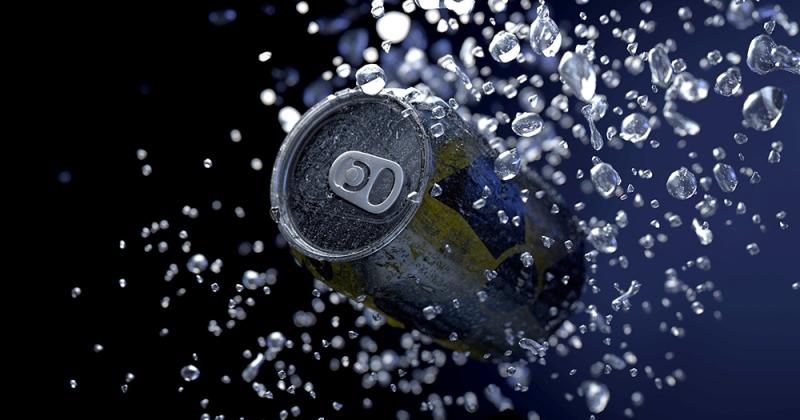
In recent years, the ready-to-drink (RTD) product segment in the on-premise has seen significant growth with new entrants and innovation, due greatly in part to a wave of consumers seeking convenient alternatives to traditional cocktails and mixed drinks, as well as the impact of the COVID pandemic on consumers’ consumption patterns. As a result, the quality of RTD products is increasing, and more companies, including small-batch distilleries, are creating premium, natural products and moving away from the overly sweet offerings of the past.
On-Premise Motivators
Andrew Hummel, client solutions director for CGA by Nielson IQ, says that given the relative high cost of RTDs versus traditional cocktails or mixed drinks, RTDs need to fill a specific occasion or channel gap.
“Quick serves, consistency, and portability are key attributes, so RTDs are well positioned for high-volume venues and experiential and recreational accounts,” Hummel says. “Today, 40% of on-premise consumers say that they are likely to try a new RTD brand in a bar or restaurant, while 60% say that they are likely to purchase a new RTD brand from a retail store. RTD drinkers are more active in the on-premise than typical visitors, as 49% of RTD consumers go out weekly for a drinking occasion and 74% for an eating occasion.”
In CGA's most recent Fall 2022 OPUS (On Premise Consumer Survey of 15,000 bar and restaurant visitors), 16% of consumers said that they have consumed an RTD in a bar or restaurant in the last three months. This is down from 18% in the fall of 2021.
Hummel says one hypothesis for the decline is that RTDs were adopted in 2021 by outlets to reduce the impact of the bartender shortage and accommodate consumers’ hygiene concerns coming out of COVID.
“As new bar staff has gained experience and COVID fears subsided, there is less demand and necessity for outlets to stock,” Hummel says.
In contrast, IWSR, a data and insight provider to the global beverage alcohol industry, is still seeing demand for RTDs due to continued industry challenges, like bar staffing. Brandy Rand, chief strategy officer, IWSR Drinks Market Analysis, says the evolution in quality perception for ready-to-drink cocktails and other RTDs in the on-premise has also spurred growth.
“With many of the lingering post-pandemic challenges facing bars and restaurants, having bar-quality drinks that serve customers quickly – and at a good margin – makes sense, especially for outdoor venues,” Rand says. “People are also asking for RTDs now because they like them and drink them at home, so demand will also dictate the pace at which the on-premise starts to carry more brands.”
IWSR consumer research shows that nearly nine in 10 people normally buy RTDs off-premise but the proportion buying on-premise has risen to over a third in 2022. Overall, volume of RTDs is still weighted heavily to the off-trade but growing in the on-trade, depending on the brand.
“Consumers in the U.S. have grown accustomed to the convenience and variety offered by RTDs, which has increasingly led to people trading up to spirit-based cocktails,” Rand says. “This reflects the overall spirits premiumization trend in the U.S. and the popularity of bar-made cocktails.”
Flavor & Innovation
Consumer interest also continues to grow as more product SKUs and innovations are introduced in the RTD category. According to CGA's study, 91% of on-premise consumers ages 21 to 34 say that they have or would like to try RTDs. “There’s constant innovation within the category from both traditional alcohol suppliers and non-alcoholic drink brands,” Hummel says. “The Beer Business Daily Summit recently cited 3,000 new RTD products in the development pipeline.”
However, with that ongoing innovation comes a bit of confusion on the part of consumers, who are also feeling overwhelmed by the breadth and depth of the product offerings. Interestingly, the CGA's Fall 2022 OPUS indicated that the top reason that on-premise consumers drink RTDs in bars and restaurants is a friend recommendation (38%). Bartender recommendations (31%) are also a top factor.
“In contrast, the top reason consumers choose to drink hard seltzers is price,” Hummel says. “This indicates that some consumers are skeptical about the category and are seeking validation from a trusted source. There is an opportunity for suppliers to focus on education to earn mind share and trust.”

Premium ready-to-drink products have a leg-up on flavored spirits since they provide convenience and ease of use. In addition, when choosing an RTD brand in a bar or restaurant, consumers say that the “quality of the product” (56%) and “range of flavors available” (46%) are most important. “Fruity and Sweet” is the most popular flavor (52%) among on-premise consumers. Females over index for “berry” (54%), while males over index for “sour” (28%) flavors. Vodka (67%) is the most popular spirit base followed by tequila (54%).
Rand agrees that flavor continues to be the #1 driver for why people say they drink RTDs over other alcohol categories. “Most drink RTDs in general because they like the taste. As the category is quite broad, we see different types of RTDs appeal to different types of consumers,” Rand says. “For example, calorie content is a more important motivator for drinkers of hard seltzers. For drinkers of RTD cocktails and long drinks, the product coming in a single-serve format is a top motivator.”
Looking Ahead
The challenge for RTDs in the on-premise channel is convincing bartenders and buyers, the gatekeepers, of the value proposition. Hummel points out that bar staff take pride in curating a thoughtful and balanced cocktail menu and, in some cases, view RTDs as diminishing their role.
For this reason, Hummel doesn't anticipate the rapid on-premise adoption of RTD cocktails that hard seltzers experienced,” Hummel says. “Consumers need a better understanding of the category and bartenders need to be convinced that RTDs can be complementary to their beverage program as opposed to a cocktail substitute.”
Rand points to the 2022 IWSR RTD Strategic Study, which examined and forecasted growth in the RTD category across 10 focus markets – Australia, Brazil, Canada, China, Germany, Japan, Mexico, South Africa, UK, and US – which cumulatively represent more than 85% of all RTD volumes worldwide.
The IWSR study indicated that the RTD category volumes across the 10 focus markets will grow by 24% over the next five years, but growth will be more moderate than in recent years. According to the study, “the U.S. continues to command the largest volumes and percentage growth, though this is expected to temper, as momentum for hard seltzers (which make up 60% of the RTD segment in the U.S.) has begun to cool in the market.
“IWSR forecasts RTDs in the on-premise in the US to grow by 7% volume CAGR between 2022-2026,” Rand says.
Plan to Attend or Participate in Bar & Restaurant Expo, March 27-29, 2023
To learn about the latest trends, issues and hot topics, and to experience and taste the best products within the bar, restaurant and hospitality industry, plan to attend Bar & Restaurant Expo, March 27-29, 2023 in Las Vegas. Visit BarandRestaurantExpo.com.
To book your sponsorship or exhibit space at Bar & Restaurant Expo, contact:
Veronica Gonnello (for companies A to G) e: [email protected] p: 212-895-8244
Tim Schultz (for companies H to Q) e: [email protected] p: 917-258-8589
Fadi Alsayegh (for companies R to Z) e: [email protected] p: 917-258-5174
Also, be sure to follow Bar & Restaurant on Facebook and Instagram for all the latest industry news and trends.
